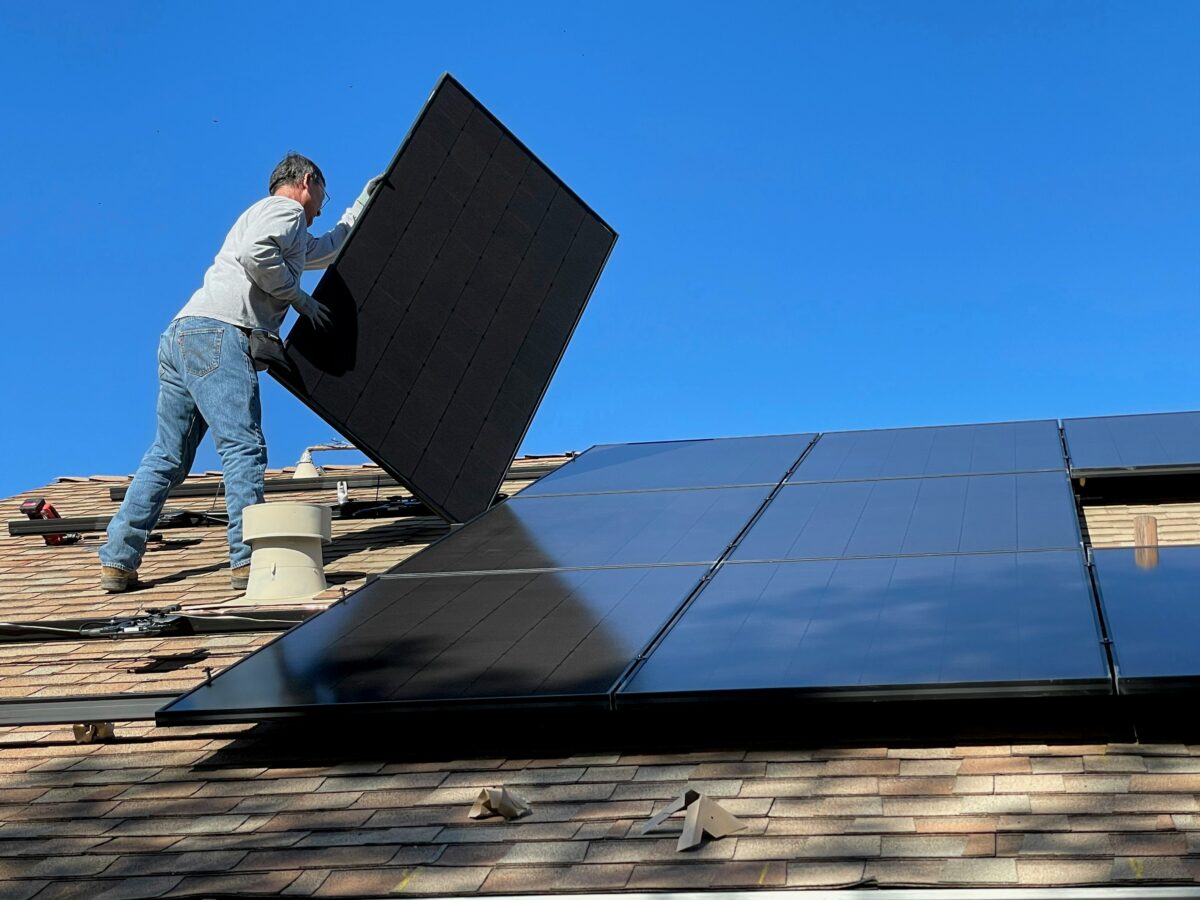From pv magazine USA
Among the leading sources of electricity, solar has the unique advantage of being able to be installed in a distributed fashion, integrating it with the built environment, preserving land and reducing transmission infrastructure needs. Rooftop residential solar can offer homeowners bill savings or price predictability in the long run, and when paired with a battery, offers a value-add of backup power and extreme weather resilience.
Environment America modeled the viable technical potential for rooftop solar in the United States, finding that it can serve 45% of U.S. electricity demand based on 2022 levels. In 2022, rooftop solar generated about 1.5% of the total electricity consumed.
Solar is also now the most cost-effective new generation source in most markets and most conditions in the United States. On average, new-build solar costs 29% less than the next-cheapest fossil fuel alternative, said a report from Ernst and Young.
For homeowners, rooftop solar can represent long-term bill savings and predictability. Environment America said though the initial investment can be substantial, most buyers can expect to break even in about eight to nine years and can expect to save between $20,000 to $96,000 on bills over the 25-year-plus life of the system.
Rooftop solar “has myriad benefits for the environment and consumers,” said Environment America. This includes reducing the need for dirty power plants and expensive transmission lines, providing lower costs, and can help to increase the grid’s resilience to extreme weather and other shocks.
Policy recommendations
Environment America made a series of policy recommendations for states and local governments to help tap the massive potential of U.S. rooftops in a recent report.
First, it recommends that states update their grid interconnection policies to align with best practices. It recommended referencing the Interstate Renewable Energy Council (IREC) Model Interconnection Procedures, 2023 edition, to support beneficial interconnection procedures.
For permitting, it recommends cities and counties to establish online automated permitting systems for small onsite solar project. SolarAPP+, developed by the National Renewable Energy Laboratory (NREL) is a free online automated permitting software for local governments. Furthermore, states can support automated permitting by funding technical backup programs for local governments implementing the software, said the report.
Popular content
Environment America said states can provide support for installation of solar on community buildings, like schools, libraries, and community centers. Nearly one in 10 K-12 schools in the United States have rooftop solar. Working against its stated climate goals, California enacted a rulemaking decision in 2023 that made it more difficult for schools, renters, and other multi-meter properties to adopt solar.
It also recommended that states adopt policies that enable the creation of virtual power plants (VPP), which lets customers sell electricity from their solar-attached batteries to the grid during times of peak demand. VPPs help customers get a return on their solar investment, and they help squeeze out peak demand reserve natural gas plants, known as peaker plants, that are highly inefficient.
Some states, even ones with massive rooftop solar potential like Florida, do not enable customers to use power purchase agreements (PPA) or other third-party financed solar projects. This shrinks the potential market size, as PPA often offer a no-upfront cost installation, securing a predictable cost of electricity for the long run. PPAs work similarly to leases in their financial structure. Environment America recommends legislating PPA access state law to open a larger market.
A major recommendation from Environment America is the support of clear, long-term rules for net energy metering (NEM). NEM involves customers exporting solar production to the grid in exchange for credit on their utility bill. In California, NEM rates were cut in April 2023 by about 80%. The market has since cratered, with nearly 20,000 jobs lost and numerous installers declaring bankruptcy.
“States should take into account the full benefits of rooftop solar, including present and future climate benefits, land conservation and community resilience benefits, and reduction in the need for new transmission and distribution lines, when determining how solar power owners should be compensated for the electricity they supply to the grid,” said Environment America.
The organization said states sure ensure consistent and predictable compensation for the lifetime of a solar investment. Overly complex metering and compensation systems that change frequently lower consumer confidence and adoption. It also suggested utilities should not assess discriminatory fees on rooftop solar customers.
“Utilities must honor commitments they made to customers who installed solar panels in past years regarding how much they would be paid for solar energy they supply to the grid,” said the report.
Finally, Environment America suggests states should ensure access to rooftop solar for renters and in low-income communities. This would include supporting virtual net metering programs and community solar programs.
California has recently worked in direct contrast to these recommendations, damaging both virtual net metering and community solar efforts in its state, despite claims from the California Public Utilities Commission (CPUC) that it is concerned about equity in solar adoption.
This content is protected by copyright and may not be reused. If you want to cooperate with us and would like to reuse some of our content, please contact: editors@pv-magazine.com.



For a typical single family residence homeowner, rooftop solar is usually the most efficient NetZero strategy.
For large (sub)urban residential, commercial & institutional properties, solar parking lot canopies +stationary storage batteries +V2G chargers can be a better solution. Modular canopy structures will last for 75+years with minimal maintenance, shade huge asphalt heat islands, make cleaning & maintaining solar systems easier, & provide area for much larger NetZero micro grids than rooftops alone. No grid interconnection queues or new utility transmission, site acquisition or other site improvement spending required. And now this can be accomplished by typical commercial property investors using federal IRA, state & local investment incentives, with just ordinary local building permits without any NIMBY opposition.